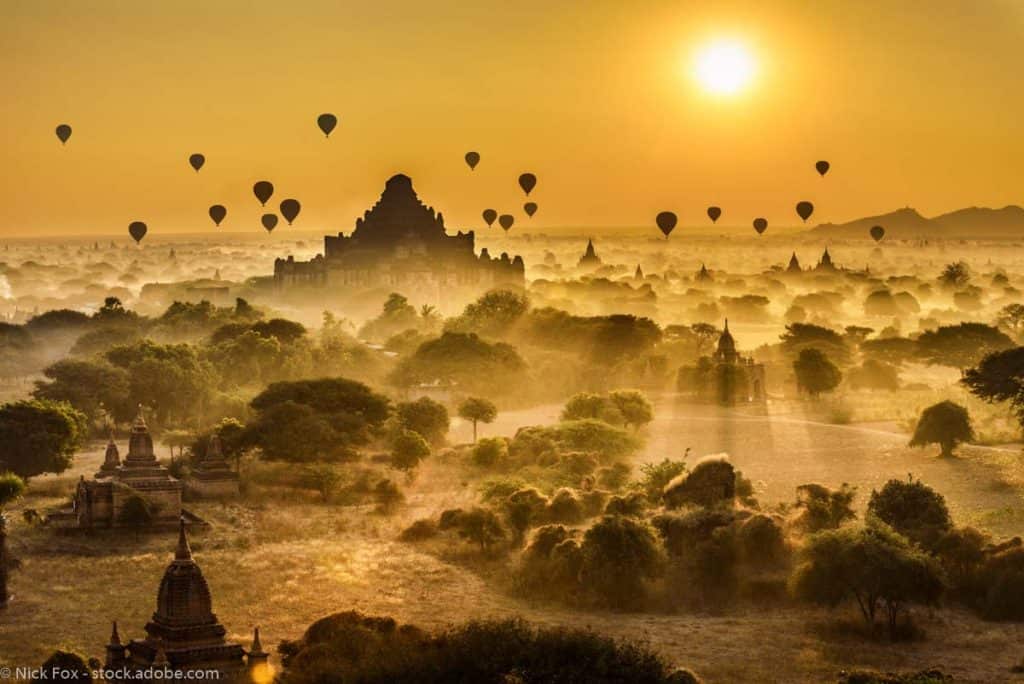

share with you EVERYTHING you need to know to explore UNESCO’s newest World Heritage Site: the archaeological ruins of Myanmar’s ancient capital, Bagan. After failing many times to become accepted by UNESCO, Bagan finally made it four days ago (July 2019)!
I’m a history and archaeology nerd, and I’ve done tons of research on the history and archaeology of Bagan before, during, and after my month-long trip in Myanmar. I’ll share what I learned so you won’t have to go out and buy all the books I bought and scour the internet for the most up-to-date info!
You’ll learn which temples to see and which order to see them in, where to see the sunset and sunrises, where to eat and stay, how to get to Bagan, what to bring with you on your trip to Bagan, and much more. Besides all this practical information, you’ll also get something that you won’t find in most other blog posts on Bagan—a guide on the art and temple architecture of Bagan. You’ll not only learn about what temples to see but also why these amazing structures are so important and what they all mean.
So, grab your camera and a sense of adventure and let’s travel to Bagan!
By the way, check out my 4-week itinerary to learn how to see the ancient ruins of Mrauk U or for a shorter stay, my 2-week itinerary for Myanmar.
Disclosure: This post may contain affiliate links. As an Amazon Associate and a Bookshop.org Associate, I earn from qualifying purchases. Please see this website's Disclosure for more info.

To make your Bagan itinerary more meaningful, you’ll first need to know a little bit about its history. Over 1,169 years ago, there was a kingdom called the Nanzhao Kingdom in southern China, located around the backpacker haven, Dali. This kingdom conquered lands all the way to Bagan. Like all kingdoms eventually do, it collapsed. However, some of the Nanzhao people decided to permanently stay in Myanmar. They settled in an area around a bend in the Irrawaddy River and called their home Bagan.
After about 200 years, a member of the royal family named Aniruddha really wanted to become king, so he killed his cousin and took over the throne. He immediately set out to conquer anyone he could get to. He was so successful that within 33 years he was able to conquer and unify all the peoples in an area almost the size of present-day Myanmar. Bagan was a major player in Southeast Asia at this time. Its only rival was another kingdom in Cambodia called Angkor.
At this time, Buddhism was having a renaissance in Asia. People went on a temple building spree. Angkor Wat was built around this time. Bagan though went all out on showing their love for Buddhism and built over 10,000 religious structures: temples, monasteries. libraries, pagodas, etc.
Eventually, like all good things, in the 13 th century Bagan’s success came to an end. It’s a bit unclear what happened, but Bagan began to decline. At the same time, Buddhism’s position across Asia also started to decline. And then came Kublai Khan and the Mongols to finish off the Bagan Kingdom. And that was pretty much the end. Bagan was no longer a kingdom. It became another village along the Irrawaddy River. It did remain an important center for religious pilgrimages over the years. And now it’s a tourist attraction that in my opinion rivals Angkor Wat.
Myanmar history is really fascinating. If you’re interested in learning more about it, click on this link to a list of books on the history of Myanmar.